 |
This period is short enough, and the comet is dramatic enough,
that humans retained a "corporate memory" of the multiple visits. (rubber stamp by Rick Geary, http://tralfaz-archives.com/comics/geary/rick_gearys_rubber_stamps.html) |
Comet Halley
Comet Halley has had a great influence on astronomy for a number of reasons. It is a periodic comet with an orbit that brings it back to the vicinity of the earth every 74 - 80 years (the variation is due to small effects on the orbit by the outer planets).
 |
This period is short enough, and the comet is dramatic enough,
that humans retained a "corporate memory" of the multiple visits. (rubber stamp by Rick Geary, http://tralfaz-archives.com/comics/geary/rick_gearys_rubber_stamps.html) |
Armed with Newton's Laws and accurate measurements from a series of visits, including ones by Kepler, Edmund Halley was able to determine the orbit of the comet and connect its many sightings over history to return visits of a single object. Below, we summarize the last thousand years of returns of the comet.
 |
Bayeux Tapestry, 1066: the comet appeared at the battle of Hastings and was thought to be a bad omen. King Harald II of England died in the battle, and the French army went on to conquer England. (from J. Paul Getty Trust, Space Art through the Ages, http://www.getty.edu/artsednet/resources/Space/Stories/halleys.html) |
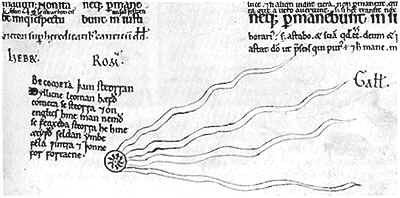 |
1145: Drawing of the comet in a book written in Canterbury,
England. http://cse.ssl.berkeley.edu/SegwayEd/lessons/cometstale/comh1.html |
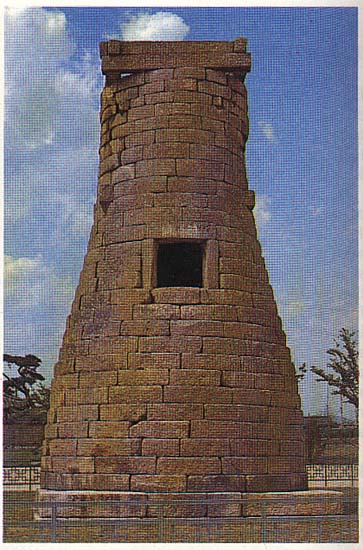 |
1222: The orbital circumstances were relatively unfavorable for a dramatic show at earth. Korean observers reported the comet was visible during the daylight hours on September 9th (probably during twilight only). The comet may have been observed from Ch'omsongdae Obsservatory, built in the mid-7th century and the oldest surviving astronomical facility in Asia. (from http://www.pennfamily.org/KSS-USA/461005-18a.html) |
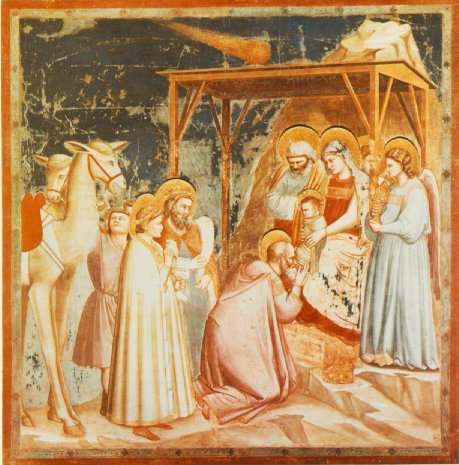 |
1301: The appearance of the comet inspired the great late-medieval artist Giotto to use it as the "Star of Bethlehem" in his Christmas scene in the Capella degli Scrovegni, Padova, Italy. http://www.lifeinuniverse.org/noflash/Giotto-06-03-01.html |
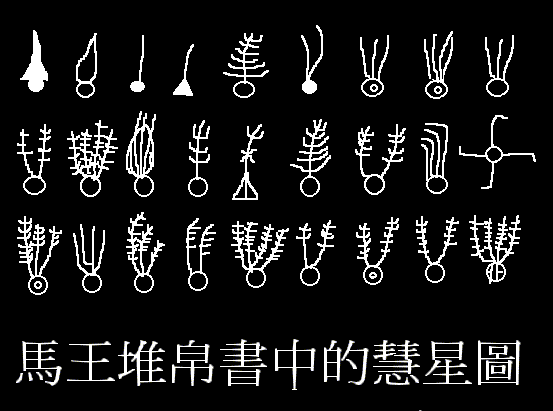 |
1378: Sightings of this return were the first in the series that convinced Halley that the appearances were periodic. Chinese observers reported cloudy weather from October 11 until Nov. 9, at which time the comet had passed behind the sun. These forms of comet with astrological interpretations date from much earlier Chinese records. http://www.astro.rug.nl/~dennis/2.html |
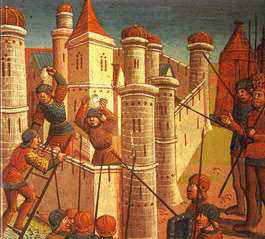 |
1456: Halley's comet made its appearance just three years after
the fall of Constantinople in 1453 - prior to that date, the city had been the religious
and economic center of Christianity. The Pope of that period, Calixtus III, solemnly
``decreed several days of prayer for the averting of the wrath of God, that whatever
calamity impended might be turned from the Christians and against the Turks.'' Then, too,
was incorporated into a litany the plea, ``From the Turk and the comet, good Lord, deliver
us.'' http://cscs.umich.edu/~crshalizi/White/signs/theo-view.html http://www.wilsonsalmanac.com/constantinople.html
|
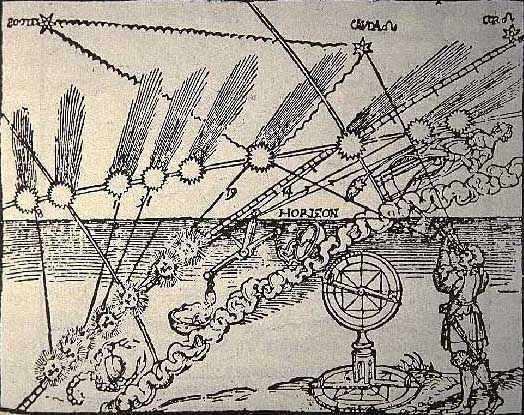 |
1531: Peter Apian demonstrates diagrammatically how the tail of
the comet always points directly away from the sun (he was the first to note this
phenomena), showing both the comets position in the sky (including its approximate
position along the ecliptic) and the sun's position on the ecliptic below the horizon (and
thus invisible to the observer!). He also illustrates how a cross-staff is used to
determine the angle between a celestial object such as a comet and a bright star (Cauda
Leonis). http://www.humboldt.edu/~rap1/EarlySciInstSite/Instruments/Torquetum/Turq.html
|
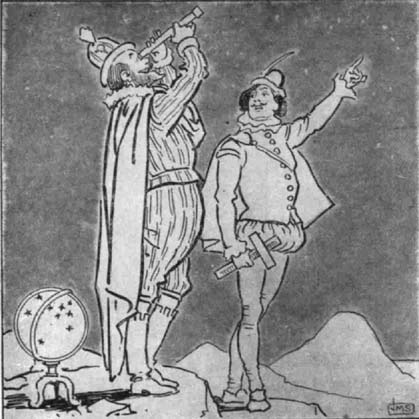 |
1607: Good observations by Kepler, and the English astronomers
Thomas Harriot and William Lower, provided the accurate data that Halley needed to predict
the orbit and determine that the comet was periodic. Harriot and Lower were pioneers in
using telescopes for astronomy, having done so at the same time as Galileo did. However,
since they did not publish anything about their observations, the credit has gone almost
entirely to Galileo. http://brynjones.members.beeb.net/wastronhist/people/wlower/pr_wlower.html
|
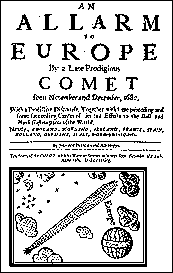 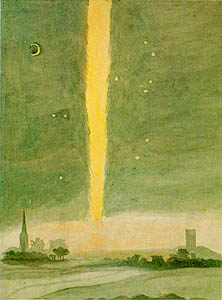 |
1682: This painting (by Atlas van Stolk) of a beautiful comet with
a long, golden tale, reflects a more positive interest people began to have about comets.
However, the flyer to the far left shows that superstitions had not died out that much. http://vesuvius.jsc.nasa.gov/er/seh/daysFeb1.html, http://cse.ssl.berkeley.edu/SegwayEd/lessons/cometstale/com.html |
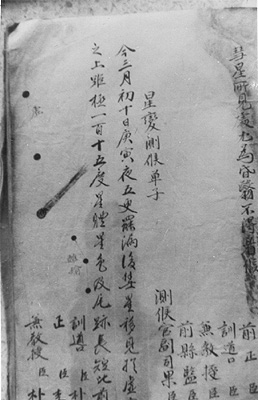 |
1759: This Korean record of Comet Halley was made
during the comet’s first predicted return in 1759 AD. The Korean astronomers have
been recording the appearance of comets and other unusual celestial objects for more than
3000 years. (Courtesy of Il-Seong Na, Yonsei University, Seoul.) http://ase.tufts.edu/astroweb/print_images.asp?id=14
|
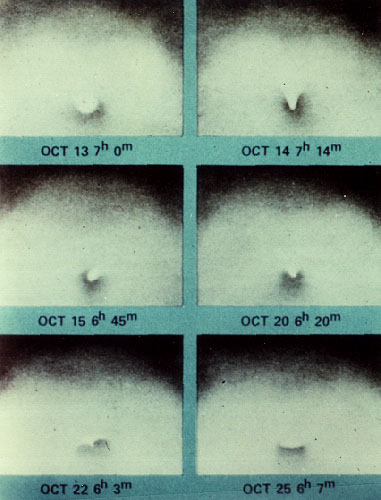 |
1835: Following the return of Comet Halley in 1835, which he had
occasion to observe, Bessel developed the "Physical Theory of Comets," published
1836, stating that comets are mainly consisted of volatile matter. http://www.hrw.com/science/si-science/physical/astronomy/exploring/comets/comet_observed.html
|
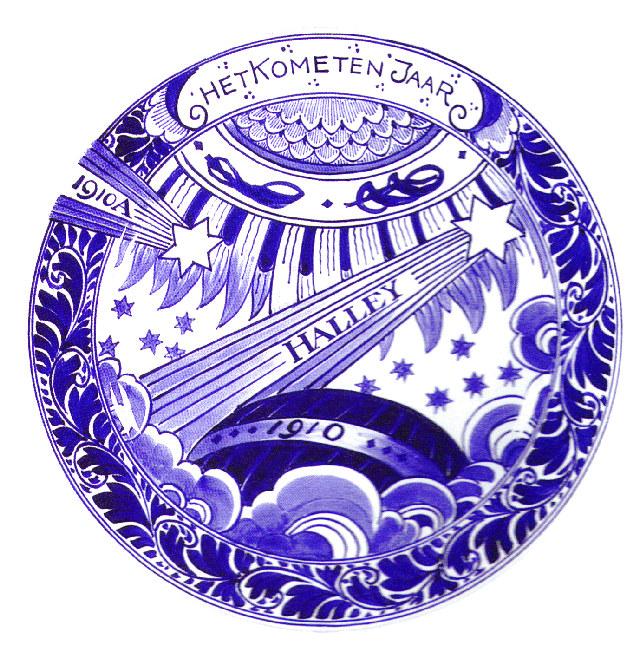 |
1910: And here is a Royal Delft plate celebrating the return in this year. |
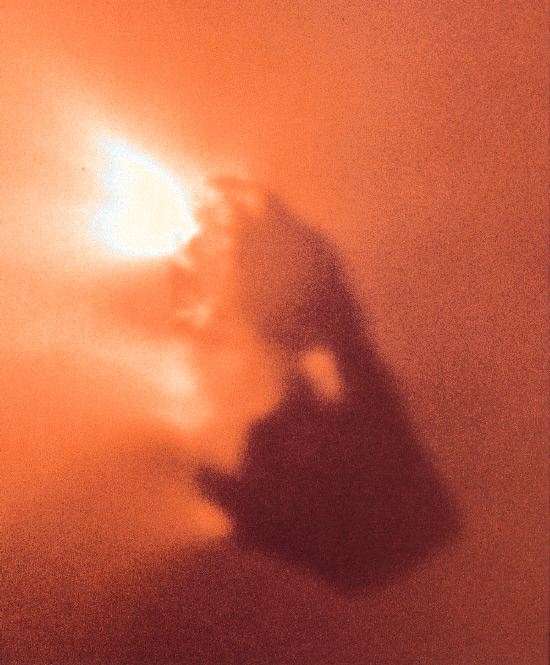 |
1986: The European Space Agency sent a spacecraft to investigate
the comet. Here is a picture of the nucleus; it is about 16 x 8 x 8 km in size, and the
picture shows clearly the gas streaming away as the ices in the nucleus are melted and
evaporated by the heat of the sun. (from ESA, APOD, http://apod.gsfc.nasa.gov/apod/ap961210.html)
|